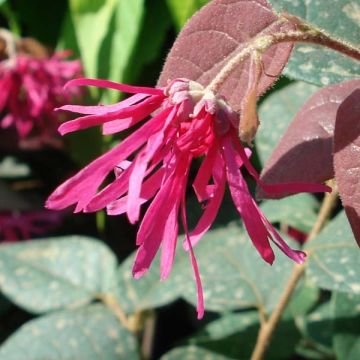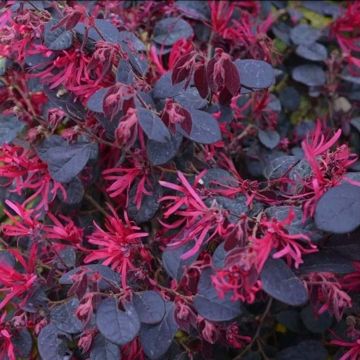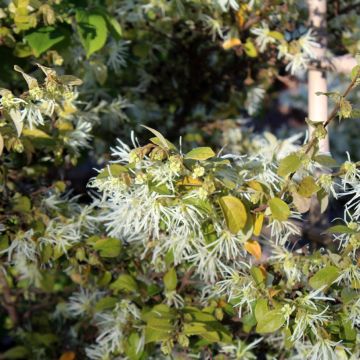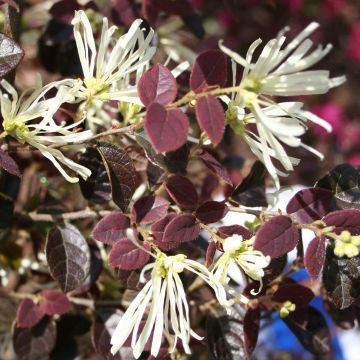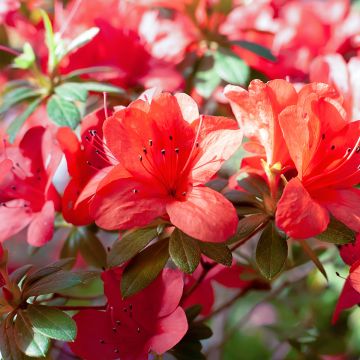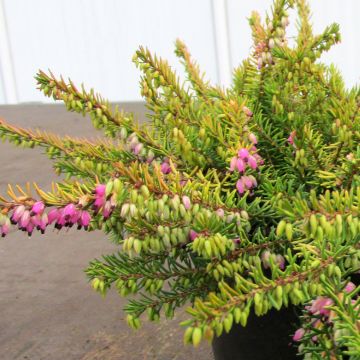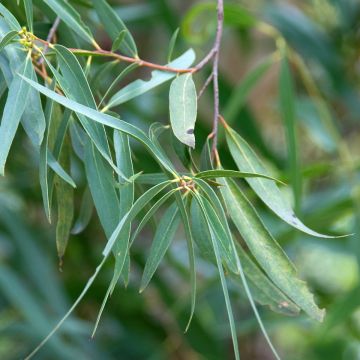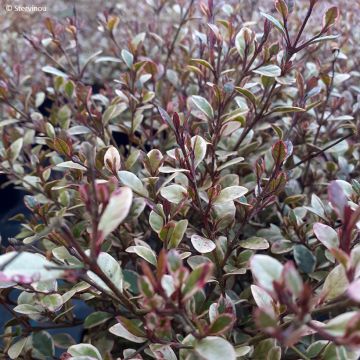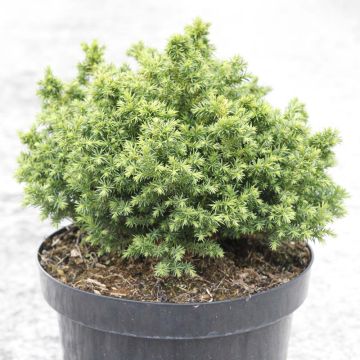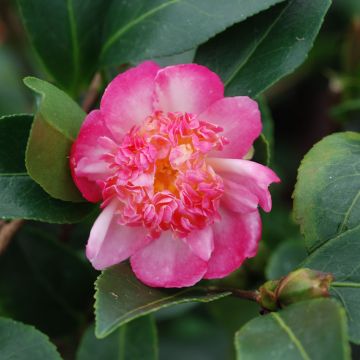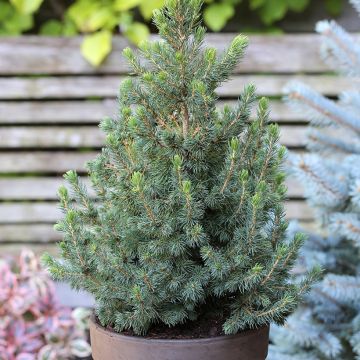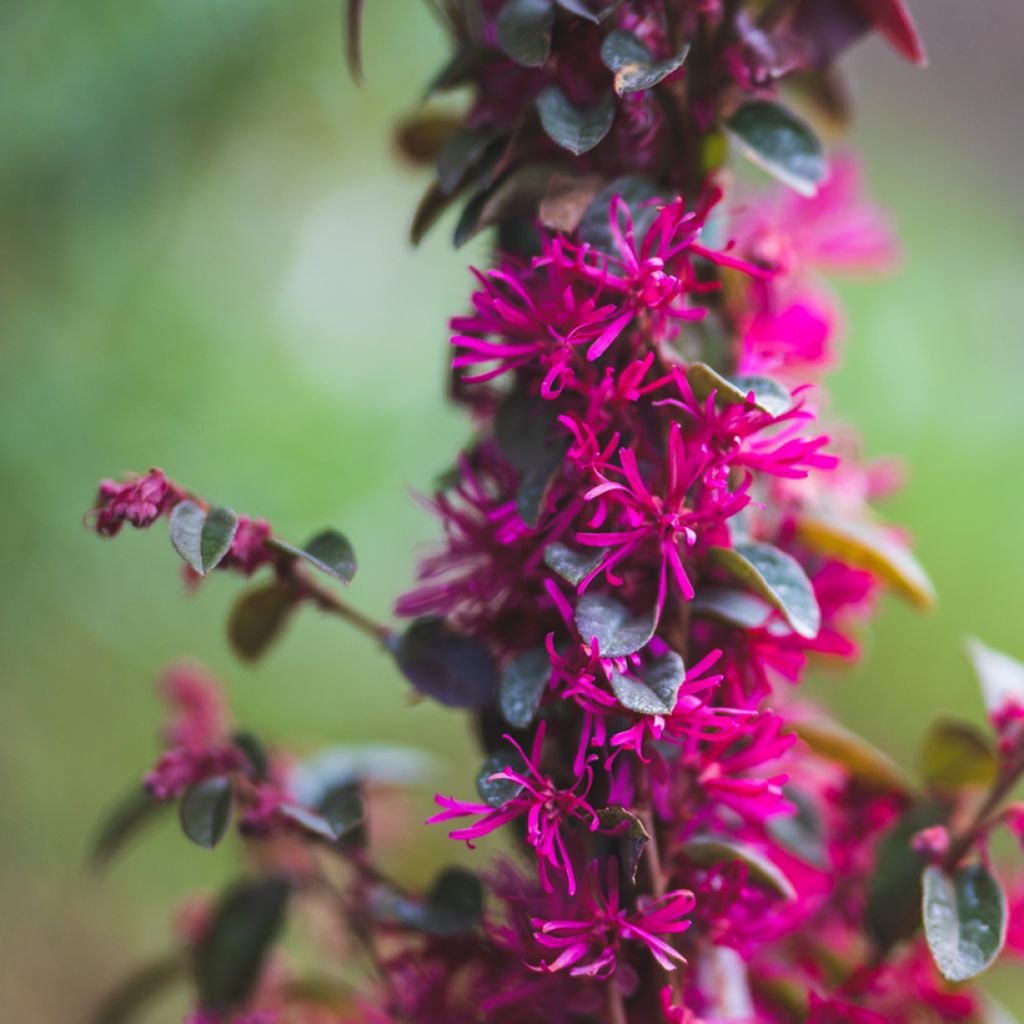

Loropetalum chinense var. rubrum Rose in Black - Chinese witch hazel
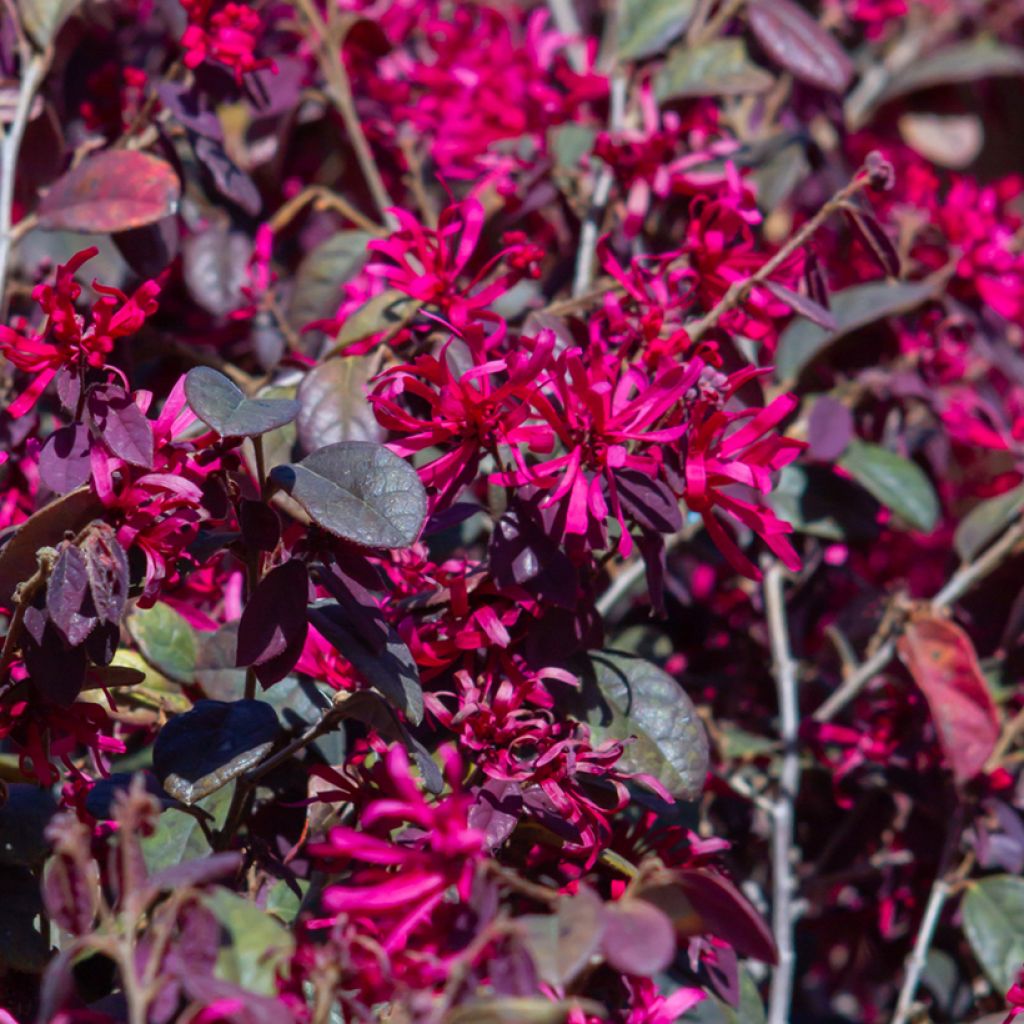

Loropetalum chinense var. rubrum Rose in Black - Chinese witch hazel
Loropetalum chinense var. rubrum Rose in Black - Chinese witch hazel
Loropetalum chinense var. rubrum Rose in Black
Chinese Witch Hazel, Chinese Fringe Flower
Why not try an alternative variety in stock?
View all →This plant carries a 24 months recovery warranty
More information
We guarantee the quality of our plants for a full growing cycle, and will replace at our expense any plant that fails to recover under normal climatic and planting conditions.
From €5.90 for pickup delivery and €6.90 for home delivery
Express home delivery from €8.90.
Does this plant fit my garden?
Set up your Plantfit profile →
Description
Loropetalum chinense 'Rose in Black' is a variety of Chinese witch hazel that stands out for its almost black foliage, a more intense and long-lasting colour than many other cultivars. Its young shoots retain a dark hue that gives flower beds a rare colour depth. Its flowers in shades of pink, red, and magenta, create a beautiful contrast during spring flowering. Compact and easy to maintain, decorative all year round, this bush is ideal for small gardens, low hedges, or container growing on a terrace.
Loropetalum is a bush from the Hamamelidaceae family, with the chinense species being the most well-known and extensively cultivated by horticulturists. This species is native to the Himalayas, China, and regions in the north and east of India, where it grows in forests and copse up to 1200 m in altitude.
The 'Rose in Black' cultivar was developed by Zheijang Senhe Seed Co. LTD in China. It is a spreading bush reaching approximately 1.2 m in height and width at maturity. Its branches are arching, contributing to its graceful habit. Its evergreen, almost black leaves are rounder than those of the typical species, with young shoots in purple. The flowering, which mainly occurs from March to May, consists of flowers with lacy petals similar to those of witch hazels, and can occur several times a year. The petals display a mix of bright pink, red, and magenta. Slightly scented, they attract pollinating insects.
Loropetalum chinense 'Rose in Black' fits perfectly in contemporary, Asian, or even romantic gardens. Its intense purple foliage creates an ideal base for structuring a flower bed or highlighting a large border. Pair it with an Acer palmatum 'Bloodgood', whose deep red foliage extends the purple palette, or Nandina domestica 'Fire Power', which adorns itself with orange-red hues in winter. At its base, light grasses like Carex oshimensis 'Everillo', with golden leaves, add movement and soften its compact habit. Hydrangea paniculata 'Limelight', with its white flowers tinged with green, offers a bright contrast under the summer sun. These combinations create a living picture, changing with the seasons, while remaining easy to maintain.
Report an error about the product description
Plant habit
Flowering
Foliage
Botanical data
Loropetalum
chinense var. rubrum
Rose in Black
Hamamelidaceae
Chinese Witch Hazel, Chinese Fringe Flower
Cultivar or hybrid
Other Loropetalum
Planting and care
Plant Loropetalum 'Rose in Black' in a sunny, non-scorching or partially shaded location (especially in hot climates), in well-drained soil that remains moist. It requires fertile, light soil, preferably non-calcareous and slightly acidic. However, Loropetalum chinense is robust and relatively tolerant of soil type. It can tolerate slightly calcareous soils and withstand drought quite well once well rooted in deep soil, with the base shaded by large perennials or small bushes. It does not like excess water, which can cause its roots, oddly coloured red, to rot. Therefore, good drainage is essential: about fifteen centimetres of coarse sand, clay pellets, non-calcareous gravel, or pumice should be placed at the bottom of the planting hole. Add compost to the garden soil, leaf compost, and possibly a bit of sand to lighten it.
If growing in a pot, use a large container, with good drainage at the bottom, gravel or potshards. Water with non-calcareous water or rainwater.
Diseases and pests: this bush is sensitive to root rot in poorly drained soil. It could also be attacked by olive knot, which can be fatal.
Planting period
Intended location
Care
This item has not been reviewed yet - be the first to leave a review about it.
Evergreen shrubs
Haven't found what you were looking for?
Hardiness is the lowest winter temperature a plant can endure without suffering serious damage or even dying. However, hardiness is affected by location (a sheltered area, such as a patio), protection (winter cover) and soil type (hardiness is improved by well-drained soil).

Photo Sharing Terms & Conditions
In order to encourage gardeners to interact and share their experiences, Promesse de fleurs offers various media enabling content to be uploaded onto its Site - in particular via the ‘Photo sharing’ module.
The User agrees to refrain from:
- Posting any content that is illegal, prejudicial, insulting, racist, inciteful to hatred, revisionist, contrary to public decency, that infringes on privacy or on the privacy rights of third parties, in particular the publicity rights of persons and goods, intellectual property rights, or the right to privacy.
- Submitting content on behalf of a third party;
- Impersonate the identity of a third party and/or publish any personal information about a third party;
In general, the User undertakes to refrain from any unethical behaviour.
All Content (in particular text, comments, files, images, photos, videos, creative works, etc.), which may be subject to property or intellectual property rights, image or other private rights, shall remain the property of the User, subject to the limited rights granted by the terms of the licence granted by Promesse de fleurs as stated below. Users are at liberty to publish or not to publish such Content on the Site, notably via the ‘Photo Sharing’ facility, and accept that this Content shall be made public and freely accessible, notably on the Internet.
Users further acknowledge, undertake to have ,and guarantee that they hold all necessary rights and permissions to publish such material on the Site, in particular with regard to the legislation in force pertaining to any privacy, property, intellectual property, image, or contractual rights, or rights of any other nature. By publishing such Content on the Site, Users acknowledge accepting full liability as publishers of the Content within the meaning of the law, and grant Promesse de fleurs, free of charge, an inclusive, worldwide licence for the said Content for the entire duration of its publication, including all reproduction, representation, up/downloading, displaying, performing, transmission, and storage rights.
Users also grant permission for their name to be linked to the Content and accept that this link may not always be made available.
By engaging in posting material, Users consent to their Content becoming automatically accessible on the Internet, in particular on other sites and/or blogs and/or web pages of the Promesse de fleurs site, including in particular social pages and the Promesse de fleurs catalogue.
Users may secure the removal of entrusted content free of charge by issuing a simple request via our contact form.
The flowering period indicated on our website applies to countries and regions located in USDA zone 8 (France, the United Kingdom, Ireland, the Netherlands, etc.)
It will vary according to where you live:
- In zones 9 to 10 (Italy, Spain, Greece, etc.), flowering will occur about 2 to 4 weeks earlier.
- In zones 6 to 7 (Germany, Poland, Slovenia, and lower mountainous regions), flowering will be delayed by 2 to 3 weeks.
- In zone 5 (Central Europe, Scandinavia), blooming will be delayed by 3 to 5 weeks.
In temperate climates, pruning of spring-flowering shrubs (forsythia, spireas, etc.) should be done just after flowering.
Pruning of summer-flowering shrubs (Indian Lilac, Perovskia, etc.) can be done in winter or spring.
In cold regions as well as with frost-sensitive plants, avoid pruning too early when severe frosts may still occur.
The planting period indicated on our website applies to countries and regions located in USDA zone 8 (France, United Kingdom, Ireland, Netherlands).
It will vary according to where you live:
- In Mediterranean zones (Marseille, Madrid, Milan, etc.), autumn and winter are the best planting periods.
- In continental zones (Strasbourg, Munich, Vienna, etc.), delay planting by 2 to 3 weeks in spring and bring it forward by 2 to 4 weeks in autumn.
- In mountainous regions (the Alps, Pyrenees, Carpathians, etc.), it is best to plant in late spring (May-June) or late summer (August-September).
The harvesting period indicated on our website applies to countries and regions in USDA zone 8 (France, England, Ireland, the Netherlands).
In colder areas (Scandinavia, Poland, Austria...) fruit and vegetable harvests are likely to be delayed by 3-4 weeks.
In warmer areas (Italy, Spain, Greece, etc.), harvesting will probably take place earlier, depending on weather conditions.
The sowing periods indicated on our website apply to countries and regions within USDA Zone 8 (France, UK, Ireland, Netherlands).
In colder areas (Scandinavia, Poland, Austria...), delay any outdoor sowing by 3-4 weeks, or sow under glass.
In warmer climes (Italy, Spain, Greece, etc.), bring outdoor sowing forward by a few weeks.


































